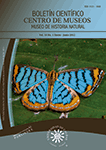Authors
Abstract
The use of complementary diets in parasitoids nutrition plays an important role in these insects' survival and fertility. For this reason, the effect of the diet in the coffee berry borer parasitoid Prorops nasuta, was evaluated using different sugar and protein solutions. The parasitoids were fed separtely in a daily basis with 5 sugars in two concentrations as follows: 1M and 50% fructose, 1M and 50 % glucose, 1M and 50 % maltose, and 25 % and 50 % honey, in addition to a control with water. The highest survival rates were obtained when the parasitoid was fed with: 25 % honey, 1M fructose, and 1M maltose, achieving a survival of 34 to 60 days in 75 % of the wasp population. With sugars 1M fructose and 1M maltose it was possible to obtain 3.15 and 3.04 stages of the parasitoid respectively, which was statistically different from the water control (1.67 stages). The effect of the diet on P. nasuta using 10 different protein solutions was also evaluated; 25 % and 12.2 % torula yeast, 25 % and 12.2 % casein, 25 % and 12.2 % soy flour, 25 % and 12.25 % wheat germ, and 25 % and 12.25 % bee pollen. The longest life span of P. nasuta was obtained when fed 12.2 %, soy flour and 25 % wheat germ, and a survival of 12 to 17 days was observed in 75 % and 50 % of the population, respectively. P. nasuta fertility was not influenced by feeding with protein solutions, because the number of biological stages of the parasitoid was the same as that obtained when it was fed only with water or did not receive any food. The sweetened solutions can be used to increase the wasp survival and fertility in massive reproduction of P. nasuta, when there is a lack of biological stages of the coffee berry borer, or to foster the parasitoid reproduction. Maltose and fructose must be taken into account when choosing weeds that offer nectaries with the presence of these sugars for P. nasuta parasitoid conservation programs.
References
BAKER, H. G. & BAKER, I., 1983. A brief historical review of the chemistry of floral nectar: 126-152 (in) BENTLEY, B. & ELIAS, T (eds.) The Biology of Nectaries. Columbia University Press. New York.
BATCHELOR, T. M., HARDY, I. C. W., BARRERA. J. F. & PÉREZ-LACHAUD, G., 2005. Insect gladiators II: Competitive interactions within and between bethylid parasitoid species of the coffee berry borer, Hypothenemus hampei (Coleoptera: Scolytidae). Biol. Control., 33: 194-202.
DAMON, A., SEGURA-PACHECO, H., VALLE-MORA, J. & SANTIESTEBAN, A., 1999. Effect of Euphorbia hirta nectar and its component sugars, upon the survival of bethylid parasitoids of the coffee berry borer. Southwestern Entomol., 24: 49-59.
DONER, L. W., 1977. The sugars of honey. J. Sci. Food Agric., 28 (5): 443-456.
GURR, G. M., WRATTEN, S. D. & ALTIERI, M. A., 2004. Ecological engineering for pest management: Advances in habitat manipulation for arthropods. CSIRO Publishing. Melbourne. 244 p.
INFANTE, F., MUMFORD, J. & BAKER, P., 2005. Life history studies of Prorops nasuta, a parasitoid of the coffee berry borer. BioControl, 50 (2): 259-270.
LANDAU, S. & EVERITT, B., 2004. A Handbook of statistical analyses using SPSS. Chapman & Hall/CRC. Boca Raton. 354 p.
LEATEMIA, J. A., LAING, J. E. & CORRIGAN, J. E., 1995. Effects of adult nutrition on longevity, fecundity, and offspring sex ratio of Trichogramma minutum Riley (Hymenoptera: Trichogrammatidae). Can. Entomol., 127 (2): 245-254.
MENSAH, R. K., & SINGLETON, A., 2003. Optimum timing and placement of a supplementary food spray Envirofeast® for the establishment of predatory insects of Helicoverpa spp. in cotton systems in Australia. Int. J. Pest Manag., 49: 163-168.
MURPHY, S. T. & RANGI, D. K., 1991. The use of the African wasp Prorops nasuta for the control of the coffee berry borer, Hypothenemus hampei in Mexico and Ecuador: The introduction programme. Insect Sci. Appl., 12: 27-34.
ONAGBOLA, E. O., FADAMIRO, H. Y. & MBATA, G. N. 2007. Longevity, fecundity, and progeny sex ratio of Pteromalus cerealellae in relation to diet, host provision, and mating. Biol. Control, 40: 222-229.
PORTILLA, M. & STREETT, D., 2006. Nuevas técnicas de producción masiva automatizada de Hypothenemus hampei sobre la dieta artificial Cenibroca modificada. Cenicafé, 57: 37-50.
MALDONADO, L. C. E. & BENAVIDES, M. P., 2007. Evaluación del establecimiento de Cephalonomia stephanoderis y Prorops nasuta, controladores de Hypothenemus hampei, en Colombia. Cenicafé, 58: 333-339.
NETTLES, W. C., 1987. Eucelatoria bryani (Diptera: Tachinidae): Effect on fecundity of feeding on hosts. Environ. Entomol., 16: 437-440.
WÄCKERS, F. L., 2001. A comparison of nectar- and honeydew sugars with respect to their utilization by the hymenopteran parasitoid Cotesia glomerata. J. Insect Physiol., 47: 1077-1084.
WÄCKERS, F. L., 2005. Suitability of (extra-) floral nectar, pollen, and honeydew as insect food sources: 17-74. (in) WÄCKERS, F. L., VAN-RIJN, P. C. J. & BRUIN, J. (eds.) Plant-provided food for carnivorous insects: A protective mutualism and its applications. Cambridge University Press. Cambridge. 368 p.
WILLIAMS, L. & ROANE, T. M., 2007. Nutritional ecology of a parasitic wasp: Food source affects gustatory, response, metabolic utilization, and survivorship. J. Insect Physiol., 53: 1262-1275.

 PDF (Español)
PDF (Español)
 FLIP
FLIP


















